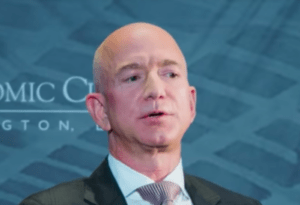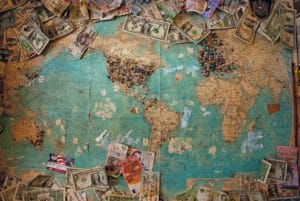Marie Cocco: Narcissism Ascendant
Time magazine's awarding of its "Person of the Year" honors to "You" reflects a depressing triumph of egotism in our culture.WASHINGTON — There is no accounting for the decision of Time magazine’s editors to declare 2006 the year of “You.” It is futile to try.
“Who are these people?” the magazine asks. Then it answers: “You,” in the editors’ view, is anyone who “actually sits down after a long day at work and says, ‘I’m not going to watch “Lost” tonight. I’m going to turn on my computer and make a movie starring my pet iguana.’ ”
This celebration of self-absorption is delivered by a magazine that once used its year-end cover to explore the significance of political heroes and villains, of groundbreaking scientists and social critics, of figures of such historical substance that even an adolescent who spends hours advertising his angst on MySpace could probably name them: Charles Lindbergh, Winston Churchill, Mohandas Gandhi, Pope John Paul II.
Now, the magazine declares, “You can learn more about how Americans live just by looking at the backgrounds of YouTube videos — those rumpled bedrooms and toy-strewn basement rec rooms — than you could from 1,000 hours of network television.”
Well, you probably could. But why would anyone, let alone the editors of a national magazine that once had a certain stature in millions of those very American homes, decide that this inspires awe?
No question, an extravagant narcissism marks our cultural age. Google confirms it: The most frequently searched words this year were “Bebo” — a British social networking site — and “MySpace,” with terms related to online video and streaming audio sites close behind. Still, the decision of supposedly sober editors to elevate this phenomenon to a news story that carries special weight is a symptom of the disorder. It’s more voyeurism than journalism.
While Time was heralding the night of the pet iguana, too many Americans still lead lives of quiet desperation, all too anonymous to those who do not look beyond their computer screens. Are they not suitable candidates for person of the year?
The front-runners would be the often desperate and yet determined residents — and displaced former residents — of New Orleans. They do without, more than a year after a natural disaster for which our government wasn’t prepared and which it still refuses to properly address. The Times-Picayune, which won the Pulitzer Prize for its coverage of the destruction of its city by Hurricane Katrina in August 2005, reports that the Lower 9th Ward remains a vacant landscape, with the few homeowners who have returned living on desolate blocks.
“The stream of tourists has dried to a trickle from the torrent that once came by cab or in rented cars,” reporter Gwen Filosa wrote.
“Even the hastily built memorial to the victims of Katrina, which appeared on the North Claiborne Avenue neutral ground at the one-year anniversary of the storm, is built around the image of an empty house. An equally suitable icon for the beleaguered Lower 9th might be the ubiquitous three- and four-step concrete stoops that lead to houses that are no longer there.”
From CNN, we learn that hundreds of teenagers are living on their own in FEMA trailers, determined to return to their schools even though their parents are unable to return to work. Hundreds more families live in squalid trailer encampments outside the city, lacking transportation to jobs or school.
If depictions of human catastrophe are insufficient to shock the conscience, perhaps cold statistics will. The Brookings Institution index of post-Katrina progress reported this month that only about half of New Orleans’ public schools have reopened, a third of its hospitals still are shuttered and only 30 percent of child-care centers that operated before the city was struck are open. But the Rosetta Stone of the diaspora is a utility bill: The Brookings researchers found that the percentage of former gas and electric customers who’ve resumed service hasn’t increased since April; only 41 percent of gas customers and 60 percent of electric consumers are back.
Chronic misery does not lend itself to a YouTube moment. It is too diffuse, too agonizingly long-term to be reduced to a 30-second clip. There were, of course, any number of disturbing images during the hurricane and its immediate aftermath. But they fade from the national memory.
The triumph of egotism that Time promotes did not cause the Katrina disaster. Nor did it lead directly to the incompetence and malfeasance that have marked the government’s response. But it should make us wonder if all this preening will only blind us to the coming of the next horror.
Marie Cocco’s e-mail address is mariecocco(at symbol)washpost.com.
Your support matters…Independent journalism is under threat and overshadowed by heavily funded mainstream media.
You can help level the playing field. Become a member.
Your tax-deductible contribution keeps us digging beneath the headlines to give you thought-provoking, investigative reporting and analysis that unearths what's really happening- without compromise.
Give today to support our courageous, independent journalists.





You need to be a supporter to comment.
There are currently no responses to this article.
Be the first to respond.